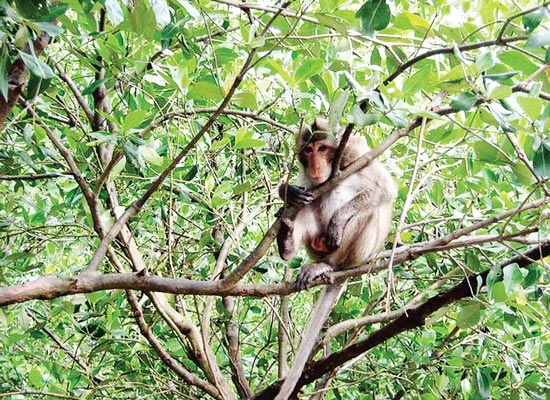 |
| HCM City is one of the hotspots of illegal trade and consumption of wildlife and plants. — Photo sggp.org.vn |
Thousands of endangered animals are consumed in the city every year, according to its Department of Natural Resources and Environment.
The increasing illegal trade in wild animals and plants was a major factor that affects the environment and bio-diversity, Nguyễn Toàn Thắng, director of the department, said last week.
The destruction of bio-diversity had a negative effect on local communities, particularly those directly depending on exploiting biological products and resources for their livelihood, he said.
The illegal trade in wildlife products is also a major factor in causing the loss of many of the most endangered species.
Nguyễn Xuân Lưu, head of the city’s Forest Protection Division, said it was a great challenge for forest protection officials to discover and prevent the illegal trade and consumption of wild animals and plants.
Rising demand for wild animals and the huge benefits from wildlife trade had accelerated poaching and trafficking, he said.
Most animals were transported from Cửu Long (Mekong) Delta and Central Highlands provinces and Cambodia for the food, pets, décor and fashion industries, he said.
The city was also a transit point for illegal exports to northern provinces and foreign countries, he added.
Wildlife played an essential role in ecological and biological processes, Vũ Ngọc Long, director of the Southern Ecology Institute, said.
It also acted as an environmental indicator, he said.
The rampant trade in wild animals had a negative effect on the image of the city, which is striving to be friendly, green and clean, he added.
Lưu said authorities encouraged commercial captive breeding of some wildlife species to meet demand as well as create jobs in local communities.
But it was important to closely monitor captive breeding since it could be used as a cover for the illegal wildlife trade, he said.
Co-ordinated efforts by various agencies such as the environmental police, market management and customs were vital to stop the trade in wildlife, he added.
Thắng said: “Environmental and bio-diversity protection is not only the responsibility of scientists and officials but all communities and individuals.”
The Biodiversity Law approved in 2008 and the national strategy and action plan on bio-diversity have created a legal framework for communities and individuals to take part in bio-diversity conservation, he added.
Leave your comment on this story